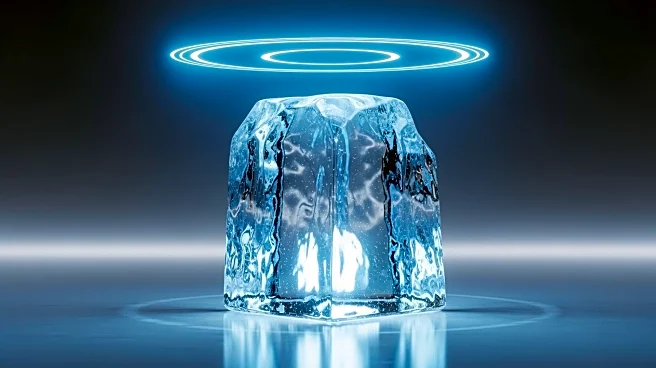What's Happening?
Researchers using the European XFEL, the world's largest X-ray laser, have discovered a new form of ice, named ice XXI, which remains solid at room temperature under extreme pressure. This discovery was made by compressing water between two diamonds,
resulting in a metastable state. The study, published in Nature Materials, suggests that this new ice form could provide insights into the composition of icy moons and other celestial bodies.
Why It's Important?
The discovery of ice XXI has significant implications for space exploration and our understanding of planetary science. It opens up possibilities for new ice formations on alien worlds, potentially altering theories about the composition and behavior of ice in extraterrestrial environments. This breakthrough could influence future research in astrophysics and planetary geology, as scientists explore the conditions under which such ice forms might exist beyond Earth.
What's Next?
Researchers will likely continue to study ice XXI to understand its properties and potential applications in space exploration. The findings may lead to further investigations into high-pressure ice phases and their transition pathways, offering new insights into the behavior of water in extreme conditions. This could pave the way for advancements in materials science and planetary exploration technologies.
Beyond the Headlines
The discovery of ice XXI challenges existing notions of ice formation and stability, highlighting the complex behavior of water under varying conditions. This could lead to a reevaluation of how scientists model ice behavior in different environments, potentially influencing climate science and the study of Earth's polar regions. The ethical implications of using such high-pressure techniques in research may also be considered, as scientists balance innovation with environmental impact.















